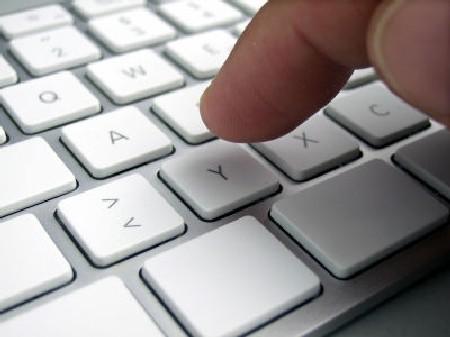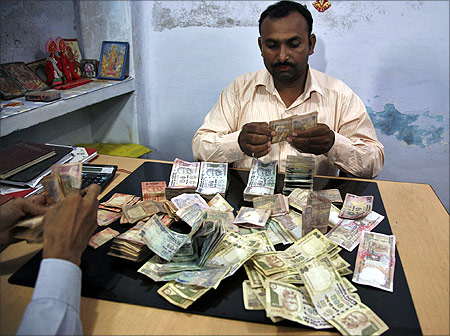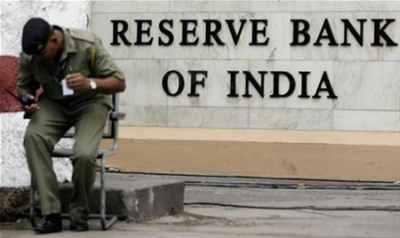Photographs: Arko Datta/Reuters
After a gap of three years, Reserve Bank Governor D Subbarao on Tuesday slashed short term lending rate by 0.50 per cent to 8 per cent, a move that will reduce the cost of home, auto and corporate loans.
The reduction in the repo rate at which RBI lends to banks, has been prompted by deceleration in growth and softening of inflation.
The cut is aimed at spurring growth to 9 per cent levels, seen before the global financial crisis that began in 2008, Subbarao said while unveiling the annual credit policy in Mumbai.
"The reduction in the repo rate is based on an assessment of growth having slowed below its post-crisis trend rate, which, in turn, is contributing to the moderation in core inflation," the Governor said.
Subbarao, however, ruled out further reduction in policy rate in the immediate future citing persistent upside risks to inflation and possible fiscal slippages driven by higher oil subsidies.
"It must be emphasised that the deviation of growth from trend is modest. At the same time, upside risks to inflation persist.
"These considerations inherently limit the space for further reduction in policy rates," he said.
. . .
RBI cuts key rates
The followings are the highlights of the Annual Monetary Policy for 2012-13 announced by Reserve Bank of India:
- Short term lending rate (repo) lowered by 0.50 per cent to 8 per cent
- Cash reserve ratio retained at 4.75 per cent
- GDP growth for 2012-13 projected at 7.3 per cent March-end
- 2012-13 inflation expected at 6.5 per cent Bank rate cut by 0.50 pc to 9 per cent
- Deposit growth pegged at 16 per cent, credit growth at 17 per cent
- Upside risk to fiscal deficit target of 5.1 per cent
- Govt borrowing may decrease credit flow to pvt sector
- Liquidity conditions moving towards comfort zone
- To issue final guidelines on Basel III by May 2012
- Tightens norms for lending against gold by NBFCs
- Next mid-quarterly monetary review on June 18
. . .
RBI cuts key rates
Image: Employees at a wholesale shop count money in Allahabad.Photographs: Jitendra Prakash/Reuters
The RBI decision is likely to prompt the banks to cut lending rates for home, auto and corporate loans, experts said.
RBI has raised lending rates 13 times between March 2010 and October 2011 to contain inflation that had been hovering near double-digit.
This had led to clamour by industry to cut rates and spur industrial and economic growth that has slowed down considerably during the past few quarters.
To ease tight liquidity situation, Subbarao announced doubling the borrowing under the Marginal Standing Facility for banks to 2 per cent of their deposits with immediate effect. It also permitted banks to borrow under the MSF even if they have excess government securities holdings.
Growth in 2011-12 is seen at a 3-year low of 6.9 per cent.
Even though spurring growth has taken the priority at the Mint Road, RBI continues to be worried about the inflation scenario, calling it as 'challenging' due to the sharp spikes in crude prices and food articles in the recent months.
. . .
RBI cuts lending rate to prop economy
As for the bank non-food bank credit, the apex bank sees it growing at 17 per cent this fiscal, (marginally higher than that of FY'12), and deposits at 16 per cent.
Besides, RBI has set-up a working group under K U B Rao to look into all aspects relating to gold loan by NBFCs.
"There has been significant increase in loans by NBFCs against gold in the recent period. There are also complaints against some NBFCs that they are not scrupulously following proper documentation process and know your customer norms, among others, in order to quickly dispose off the cases relating to gold loans," RBI said.
Gold imports have also increased sharply, raising macroeconomic concerns, it added.
The working group is expected to submit the report by end-July 2012, it added.
RBI will undertake the mid-quarterly review of the monetary policy on June 18 while first quarter review is scheduled on July 31.





article